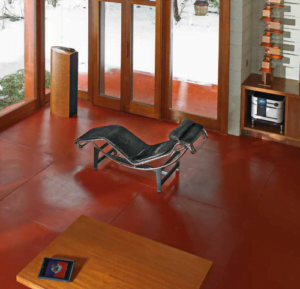
We talked about performance speakers and the importance of proper speaker placement in Part 1 of our Listening Room feature. We also covered the acoustic properties and critical dimensions of the room design. Now, let’s dive into what drives the sound!
Key Components
The heart of your system driving sound to each channel is the amplifier. Unlike your Home Theater’s AV Receiver that houses an all-in-one pre-amp, amplifier and processor for surround sound, hi-end audio systems have dedicated amplifiers, often one per channel. A more sophisticated set-up will have 2-way or 3-way amps that support each speaker. A pre-amp serves as the input device. It will convert signals from all audio sources such as a tuner, turntable and streaming devices to the signal that the amp wants.

It’s essential that the amplifier be matched to the specifications of the speaker to provide optimal output. LaScala can guide you through your choices and design to your listening preferences. Our go-to is Classé, part of the B&W Group. Their line of components offers exquisite sound to complement any hi-end audio system. Check out this recent review of the Sigma 2200i integrated amplifier by Stereophile.
Connections
It is common knowledge that HDMI Cables are required to pass 4K and hi-end audio has similar requirements. Like video, quality cables are recommended for a solid, clean connection. That doesn’t necessarily mean the most expensive, just of good quality and appropriately sized for the given application. We can calculate the appropriate gauge cable that will deliver the necessary wattage to the speaker based on the distance. As for the connectors, gold are preferred over silver or other metallic. Locking connectors are a good choice for equipment that is seldom moved.
Having sufficient, clean power is paramount to the sound quality. Every AV system needs a name brand, purposely built, surge protector. Surge protection will remove artifacts from your power, filtering out spikes and dips. Insufficient power can make the amplifiers put out harmonics that will “color” the sound, creating unwanted distortion.
Commissioning
Once the system has been designed and the components selected, the next step is installation and commissioning. Measuring and testing the room’s characteristics, reverb, etc., we’ll “tune” the room to enable undistorted sound. By adjusting equalization (EQ), gain structure and speaker placement, we target a flat frequency response.
Content in Controversy
We often hear that a turntable’s needle against vinyl is the only way to listen to music. It can be argued that the harmonic distortion created introduces a mild alteration that is perceived by many as warmth. The pops and crackles the needle yields evoke a “vintage” sense that some find pleasing and quite authentic. However, according to Mark Slee of Facebook, “In terms of fidelity and accuracy of sonic reproduction, CDs outperform vinyl in significant ways. With that said, there are sonic artifacts and emotional attachments with vinyl that many find pleasing. This creates a preference for vinyl – which some would describe as better, but this is a subjective quality as measured by the ear of the beholder.” With turntable sales up 16%, there’s apparently some “old schoolers” out there that agree.
The higher the bit rate of the audio, the more accurate the sound. Analog is uncompressed and the format truest to form. Overly processed audio, on the other hand, can mask or cancel parts of the music, eliminating the ability to hear everything as it was mastered.
All things being equal, the more information a format can transmit, the better the sound produced. For the best listening experience, the sound transmitted should pass through quality cabling and components and be listened to in a space that is purposefully designed to capture every nuance. Are you ready to hear what you’ve been missing? Let our award-winning team at LaScala help design or retrofit your personal listening space and enjoy music as it was intended to be!
Additional Resources:
Is the sound on vinyl records better than on CDs or DVDs?
Vinyl Vs CD/Mp3: Insights into Music Formats & the Metaphysics of Our Music
24/192 Music Downloads…and why they make no sense
